UD18
Specifications
Details
Double layer and splice detection for paper, cardboard, metal, and plastic
The UD18-2 specializes in checking for double layers and splices using ultrasonic technology. Operating with precision, it is able to determine whether one, two or no material layers are present between its sender and receiver. Where the UD18-2 really excels is checking for double layers in paper, cardboard, shiny metal, and transparent plastic. It is possible to teach in up to four sensitivity levels and switch between them during operation, allowing the sensor to tackle even the most complex of applications and ensure permanent system availability with a consistently excellent level of production quality.
UD18 AT A GLANCE
Benefits
-Maximum productivity and quality thanks to reliable material transportation monitoring
-Rapid commissioning thanks to plug-and-play plus a range of sensitivity levels to choose from
-Easy to switch between sensitivity levels during operation, preventing downtimes during material changes
-Individual teach-in of various materials, making it possible to tackle even the most demanding applications
-The utmost flexibility during installation thanks to variable mounting distance
-LEDs visible from any direction, making it easy to monitor double sheet detections
-Reliable detection in dirty, dusty, and humid conditions thanks to the ultrasonic technology''s immunity to these environments
Features
-Material classifications: no layers, single layer, double layers
-Plug-and-play; sensitivity levels that can be selected, taught in, and changed during operation
-Up to four individual sensitivity levels
-Variable mounting distance
-LEDs visible from any direction
-Immune to dirt, dust, and humidity
ADVANTAGES
 Double layer detection with ultrasonics
Double layer detection with ultrasonics
The UD18 specializes in checking for double layers and adhesive areas using ultrasonic technology. Operating with precision, it is able to determine whether one or two sheets of material – or none at all – are present between its sender and receiver.
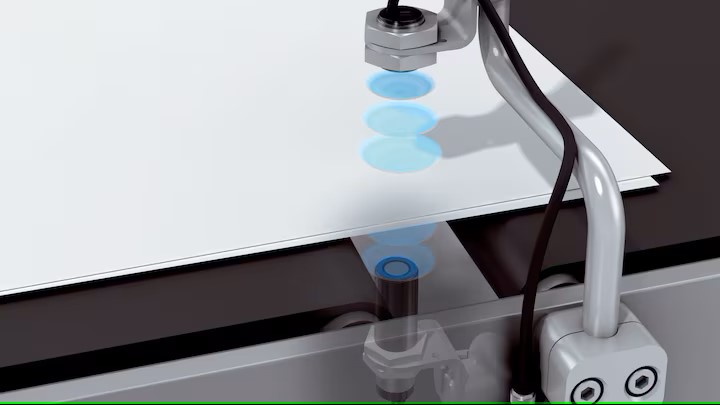
Principle of operation of the UD18
The sender sends ultrasonic waves towards the receiver. If there is no material between the sender and receiver, the ultrasonic waves arrive at the receiver at full strength. If there are one or two material layers between the sender and receiver, the ultrasonic waves are correspondingly weakened. The receiver directly evaluates the respective ultrasonic pulse and sets the corresponding output signals.
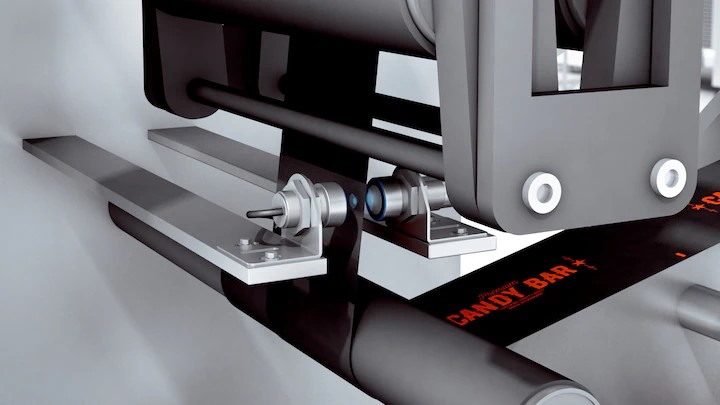
An overview of the strengths of the UD18
Material classifications: no layers, single layer, double layers,Variable mounting distance of 20 mm to 70 mm,3 selectable levels of sensitivity,Up to 4 individual levels of sensitivity can be taught in to detect even fully adhered materials,Levels of sensitivity can be changed during system operation ,Additional configuration and visualization options via Connect+ Software
 Where the UD18 ultrasonic sensor from SICK really excels is checking for double layers in paper, cardboard, shiny metal, and transparent plastic. Typical fields of application for the UD18 are found in the following sectors:
Where the UD18 ultrasonic sensor from SICK really excels is checking for double layers in paper, cardboard, shiny metal, and transparent plastic. Typical fields of application for the UD18 are found in the following sectors:
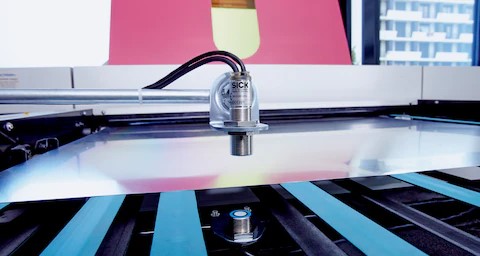
Automotive and parts supplier industry, mechanical engineering (sheet metal)
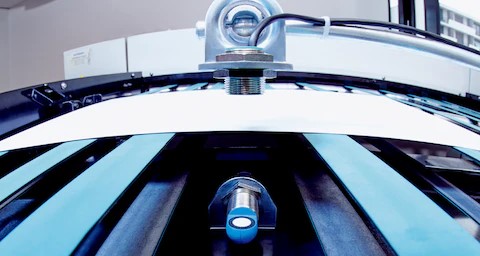
Print and paper industry (cardboard and paper)
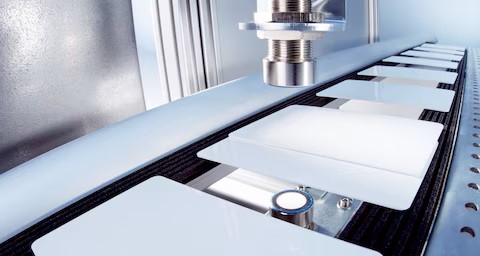
Electronics and solar industry (chip cards)
Precise double layer detection of paper, cardboard, metal and precise – even of glossy or transparent materials Due to the four teachable sensitivity levels, the sensor can tackle even the most complex of applications and ensure permanent plant availability with a consistently excellent level of production quality.
SICK LifeTime Services
SICK’s services increase machine and plant productivity, enhance the safety of people all over the world, provide a solid foundation for a sustainable business operation, and protect investment goods. In addition to its usual consulting services, SICK provides direct on-site support during the conceptual design and commissioning phases as well as during operation.
The range of services not only covers aspects like maintenance and inspection, but also includes performance checks as well as upgrades and retrofits. Modular or customized service contracts extend the service life of plants and therefore increase their availability. If faults occur or limit values are exceeded, these are detected at all times by the corresponding sensors and systems.
.jpg)
Consulting and design
Application-specific advice on the product, its integration and the application itself.
.jpg)
Commissioning and maintenance
Application-optimized and sustainable ─ thanks to professional commissioning and maintenance by a trained SICK service technician.
.jpg)
Service contracts
Extended warranty, SICK Remote Service, 24-hour helpdesk, maintenance, availability guarantees and other modular components can be individually combined on request.
View more about UD18 on main site

